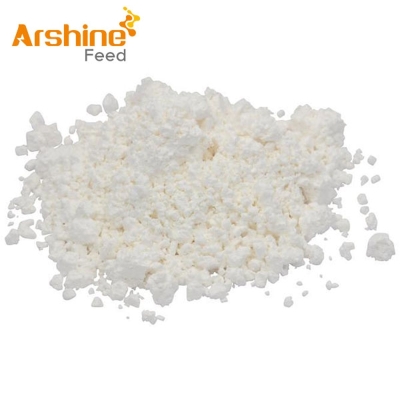The United States constantly adjusts its agricultural structure and tries its best to export agricultural products
-
Last Update: 2002-04-24
-
Source: Internet
-
Author: User
Search more information of high quality chemicals, good prices and reliable suppliers, visit
www.echemi.com
Introduction: in the past 10 years, the U.S government has continuously strengthened its structural adjustment of agriculture and made great efforts to adjust its policies according to the new characteristics of the world market, especially regarding expanding the export of agricultural products as the top priority of the strategic adjustment of agriculture To a certain extent, it has solved the problem of oversupply and surplus of agricultural products in the domestic market With the progress of science and technology, especially the development of biotechnology such as transgenic technology, the productivity of American agriculture has been greatly improved, and the development speed of agricultural production has been greatly accelerated While the cost of agricultural production has been falling, the output has been increasing However, due to the saturation of domestic market demand, the problem of agricultural product surplus is becoming more and more prominent The U.S government has taken many measures, including the implementation of the policy of fallow, to try to solve the problem of surplus agricultural products After entering the 1990s, the US government aimed at the international market and made every effort to promote the export of agricultural products In fiscal year 2001, the export volume of agricultural products of the United States reached 53.5 billion US dollars, more than seven times that of 1970, which was 7.3 billion US dollars In terms of the share of the world market, American agricultural products account for a high proportion: wheat export accounts for 45% of the world market, soybean export accounts for 34%, and corn export accounts for more than 21% At present, the export of agricultural products accounts for 25% of the total agricultural sales in the United States The strategic adjustment of U.S agricultural export policy mainly focuses on the following aspects: first of all, adjust the direction of agricultural products export, and focus on developing countries and middle-income countries The U.S government believes that not only the U.S domestic agricultural product market is saturated, but also developed countries such as Europe are "mature markets" with little potential for expansion Therefore, in order to promote the export of agricultural products on a large scale, it is necessary to open up the markets of developing countries and central and Eastern European countries While striving to open up markets of all countries in the world, the United States also regards some developing countries with rapid economic development as "middle class" countries with huge market potential, and takes exports to these countries (including China) as the focus of adjustment The basis for the United States to formulate such a strategy is: first, the demand for food and agricultural products in developing countries is large; second, the proportion of developing countries' spending on food is large, accounting for 47% of their income on average; third, the market potential of developing countries is large, and 85% of the world's agricultural demand growth in 2020 will come from these countries; fourth, with the economic growth of these countries, their market will The demand for high-quality meat and fruit and vegetable products will increase rapidly Secondly, tyy increased the export proportion of high value-added agricultural products In the past decade, the world grain price has been decreasing year by year Therefore, the United States attaches great importance to the transformation of food into high value-added products for export, which not only improves the export value, but also increases domestic employment, killing two birds with one stone In the processing of agricultural products in the United States, the conversion rate of grain increased rapidly In exports, high value-added products are growing rapidly According to statistics, in 1990, the export value of meat products converted from grains and soybeans in the United States accounted for 1.4% and 1.8% of the gross production of these two types of food By 2000, the proportion had risen to 4.3% and 5.4%, which had nearly tripled in 10 years At present, the United States has become a pure exporter of beef, pork and poultry products TYY third, strive to break the export barriers and force other countries to reduce import tariffs and agricultural subsidies From the overall situation of the world market, the competition of agricultural products trade is becoming increasingly fierce Although the export of the United States continues to increase, its share in the total market share continues to shrink The United States believes that, in addition to the adverse impact of the high dollar price on agricultural exports in recent years, the high import tariffs of many countries are the main obstacle to the large-scale export of American agricultural products To this end, the United States has held trade negotiations with many countries in recent years, and agricultural trade is one of the focuses of the negotiations At present, the United States has reached agreements with many countries on the export of agricultural products, forcing some countries to reduce import tariffs, thus promoting the export of American agricultural products At the same time, the United States has also been bargaining with the European Union and other developed agricultural countries for a long time, forcing them to reduce agricultural subsidies to enhance the competitiveness of American agricultural products TYY After entering the 21st century, the strategic adjustment of American agricultural export will continue to strengthen, and it is expected to focus on the following aspects: first, continue to promote trade liberalization of agricultural products, force other countries to gradually reduce import tariff and non-tariff barriers, and strive to expand the foreign market of genetically modified agricultural products; second, vigorously improve the competitiveness of domestic agricultural products, including improving quality and reducing price Low cost and increase the proportion of high value-added products; third, ensure the smooth flow of export channels, including market information collection and release, and improve transport efficiency; fourth, increase investment in foreign market development, and the expenditure on market development will increase significantly; fifth, continue to focus on some of the fastest-growing foreign markets, and the government will export to these countries As a key support object, provide more export convenience Tyy (author:) to feed Weibo to:
This article is an English version of an article which is originally in the Chinese language on echemi.com and is provided for information purposes only.
This website makes no representation or warranty of any kind, either expressed or implied, as to the accuracy, completeness ownership or reliability of
the article or any translations thereof. If you have any concerns or complaints relating to the article, please send an email, providing a detailed
description of the concern or complaint, to
service@echemi.com. A staff member will contact you within 5 working days. Once verified, infringing content
will be removed immediately.







